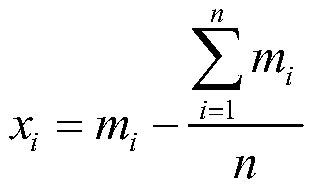Identity recognition method based on PPG signal sparse decomposition
An identity recognition and signal sparse technology, applied in the field of information processing, can solve the problems of high algorithm complexity, large input classifier feature dimension, unable to meet the high requirements of identity recognition, etc. The effect of accuracy
- Summary
- Abstract
- Description
- Claims
- Application Information
AI Technical Summary
Problems solved by technology
Method used
Image
Examples
Embodiment Construction
[0033] see figure 1 , the present embodiment provides an identity recognition method based on PPG signal sparse decomposition, comprising the following steps:
[0034] Step 1. Obtain the PPG signal of the person to be identified, and establish a training database and a test data set.
[0035] Collect the PPG signals of N individuals in a specified period of time through the smart toilet mat to form the training data m tra i n . Then collect the PPG signal of one of them in another time period as the test data m test ;
[0036] Step 2. Preprocess the PPG signal using bandpass filtering, moving average, and zero-meanization.
[0037] In the first step, the frequency of the pulsation component in the PPG signal is 0.4-7Hz, and the motion artifact frequency is 0.1Hz or above, so the signal is first passed through a band-pass filter with a passband of 0.4-7Hz to retain the main part of the pulsation component.
[0038] The second step is to do further processing through movin...
PUM
 Login to View More
Login to View More Abstract
Description
Claims
Application Information
 Login to View More
Login to View More - R&D
- Intellectual Property
- Life Sciences
- Materials
- Tech Scout
- Unparalleled Data Quality
- Higher Quality Content
- 60% Fewer Hallucinations
Browse by: Latest US Patents, China's latest patents, Technical Efficacy Thesaurus, Application Domain, Technology Topic, Popular Technical Reports.
© 2025 PatSnap. All rights reserved.Legal|Privacy policy|Modern Slavery Act Transparency Statement|Sitemap|About US| Contact US: help@patsnap.com



